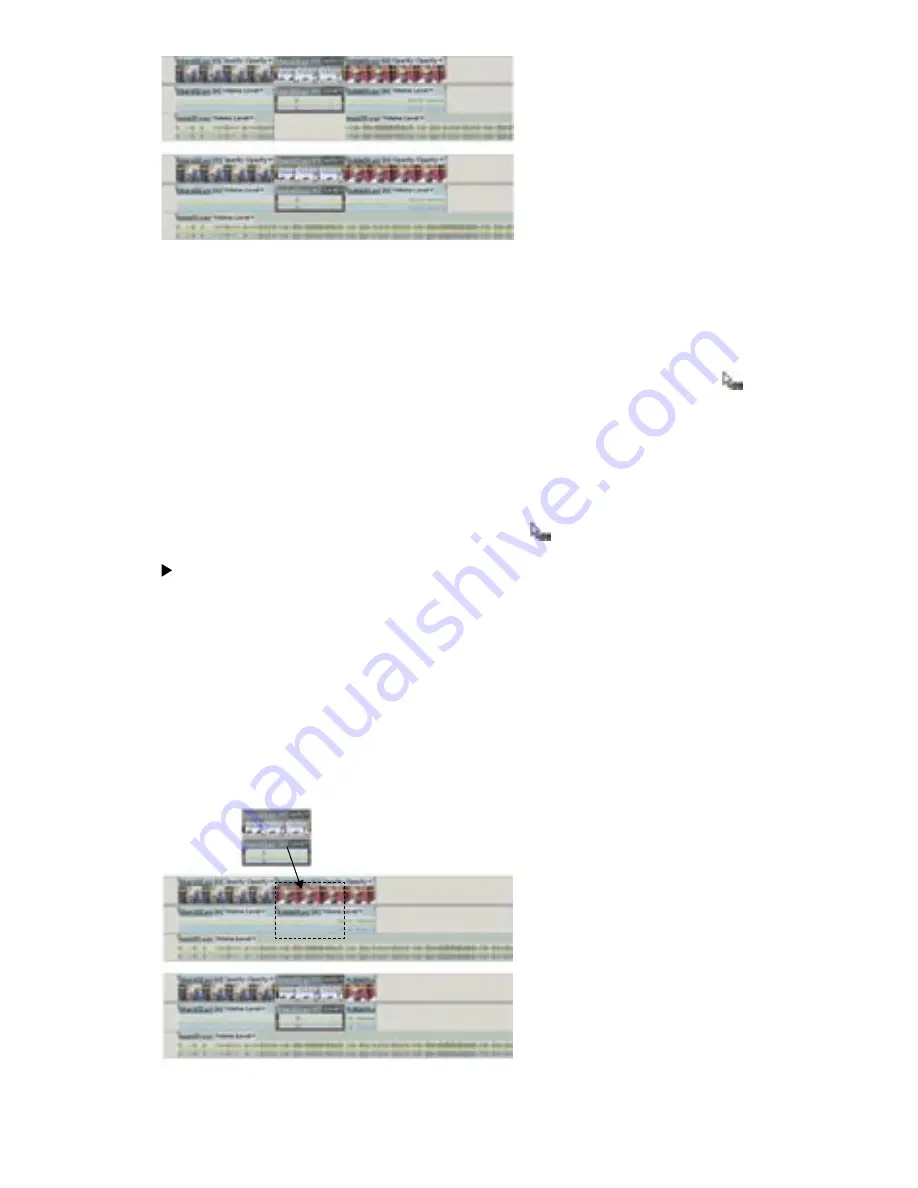
16
17
Clips after default insertion (top), and after Alt-drag insertion to target track (bottom). Notice second
audio track unaffected by Alt-drag insertion.
To insert a clip into a movie, shifting all tracks:
Do one of the following:
• Drag the clip from the Media window or Clip view of the Monitor window to the desired
location in the Timeline window. When the pointer changes to the Insert icon
,
release the mouse.
• Move the current-time indicator to the desired location in the Timeline window, select the
clip in the Media window, and then choose Clip > Insert.
To insert a clip into a movie, shifting clips only on the target and linked tracks:
Alt-drag the clip from the Media window or Clip view to the desired location in the Timeline
window. When the pointer changes to the Insert icon
, release the mouse.
If you drag a clip into the blank space above the topmost video track (for video) or below
the lowest audio track (for audio), Adobe Premiere Elements creates a new track for the
clip. If the clip contains both audio and video, it creates both a new video and new
audio track.
Overlaying clips in a movie
The easiest way to replace a portion of a video is to overlay it with other footage. When
you overlay a clip, the clip you add replaces any existing frames starting at the location you
designate. If the new clip is 40 frames long, it overlays 40 frames of the existing clip. The
frames following the overlay, if any, remain in the same location in the track. Overlays do
not change the length of the movie unless the overlay extends beyond the end of
the movie.
Clips before an overlay edit (top) and after an overlay edit (bottom)






























